本文由Heneghan Peng Architects授权mooool发表,欢迎转发,禁止以mooool编辑版本转载。
Thanks Heneghan Peng Architects for authorizing the publication of the project on mooool. Text description provided by Heneghan Peng Architects.
Heneghan Peng Architects:巴勒斯坦博物馆的使命是成为塑造和传播巴勒斯坦历史、社会和文化的知识的最主要、最可信和最有力的平台。为了完成这项任务,客户的意图是开发一个位于耶路撒冷(西岸)以北25公里的巴勒斯坦博物馆中心,并分两期进行建设施工。一期工程(2016年竣工)占地3500平方米。它包括一个气候控制的画廊空间,一个圆形剧场,一个带有户外座位的自助餐厅,一个图书馆、教室、储藏室以及一个礼品店和行政空间,这些全部设置在4公顷的规划花园范围内。第二期,这个博物馆的总面积将扩大到1万平方米。
Heneghan Peng Architects:The mission of the Palestinian Museum is to be the leading, most credible and robust platform for shaping and communicating knowledge about Palestinian history, society and culture. To deliver on this mission, the client’s intention has been to develop a Palestinian Museum hub located 25km north of Jerusalem (West Bank), and in two phases of building construction. Phase 1 (completed 2016) consists of a built area of 3, 500SM. It includes a climate-controlled gallery space, an amphitheatre, a cafeteria with outdoor seating, a library, classrooms, storage, a gift shop and administrative spaces; all set within 4 hectares of planned gardens. During Phase 2; the Museum will expand to a total of 10, 000SM.
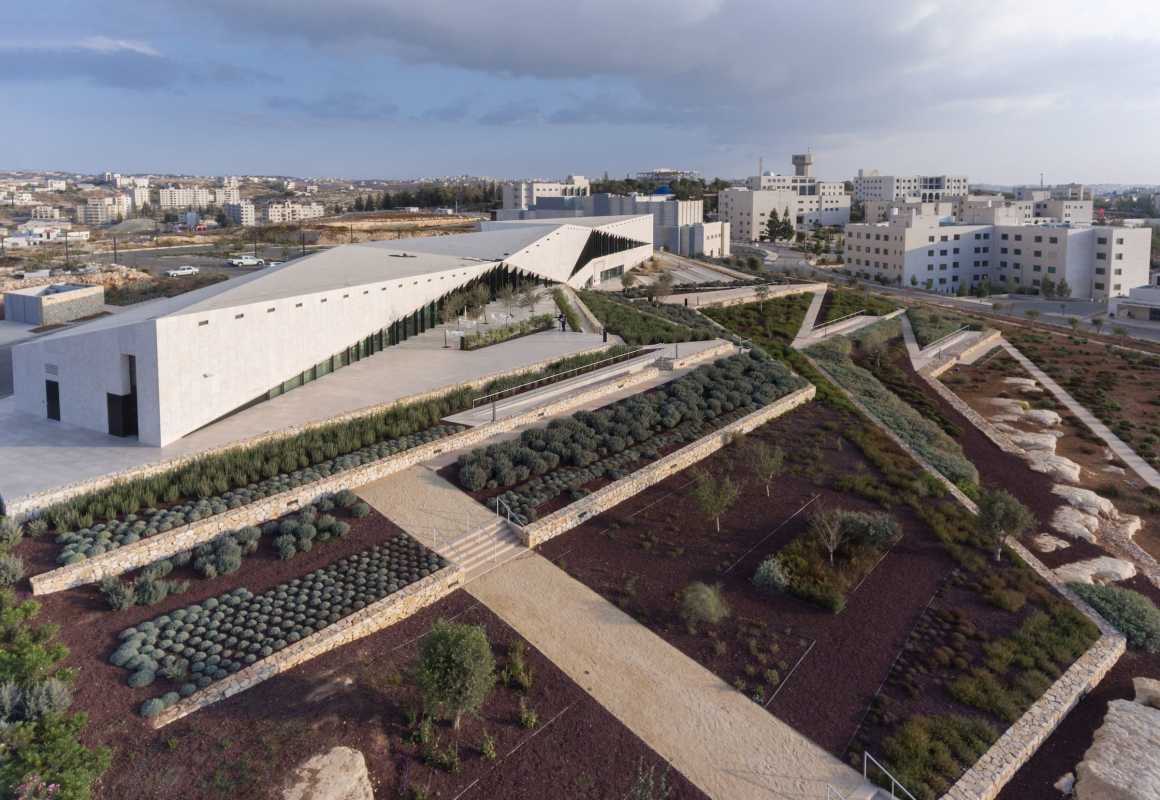
巴勒斯坦博物馆的景观融入了该城市的特色,涵盖了城市中的每一个元素,讲述了一个关于干预、生产、文化、环境和商业的故事。梯田景观已经融入了这座城市的历史,巴勒斯坦博物馆的做法是利用梯田景观的这段历史,将博物馆嵌入其紧邻之地,并从这里开始讲述一个更大、更多元化的文化故事。该场地是通过一系列层叠的梯田形成的,梯田是由该地区以前的农业梯田的田埂砌成的。该景观的主题是:从文化景观到原生景观,随着越来越多的文化通过建筑附近的梯田展开,种植景观也会随着人们向西面的梯田移动而逐渐发生变化。
The landscape of the Palestine has the ‘worked’ quality of a city; every element of it has been touched and tells a story of intervention, production, culture, environment and commerce. Like a city, the terraced landscape has embedded within it its history. The approach to the Palestinian Museum is to draw on this history of the terraced landscape, embedding the museum into its immediate site and drawing from this site to tell a larger story of a diverse culture. The site is formed through a series of cascading terraces, created by field stone walls which trace the previous agricultural terraces of the area. The theme of the landscape; from the cultural to the native landscape, unfolds across the terraces with the more cultured and domesticated terraces close to the building, the planting changes gradually as one moves down the terraces to the west.


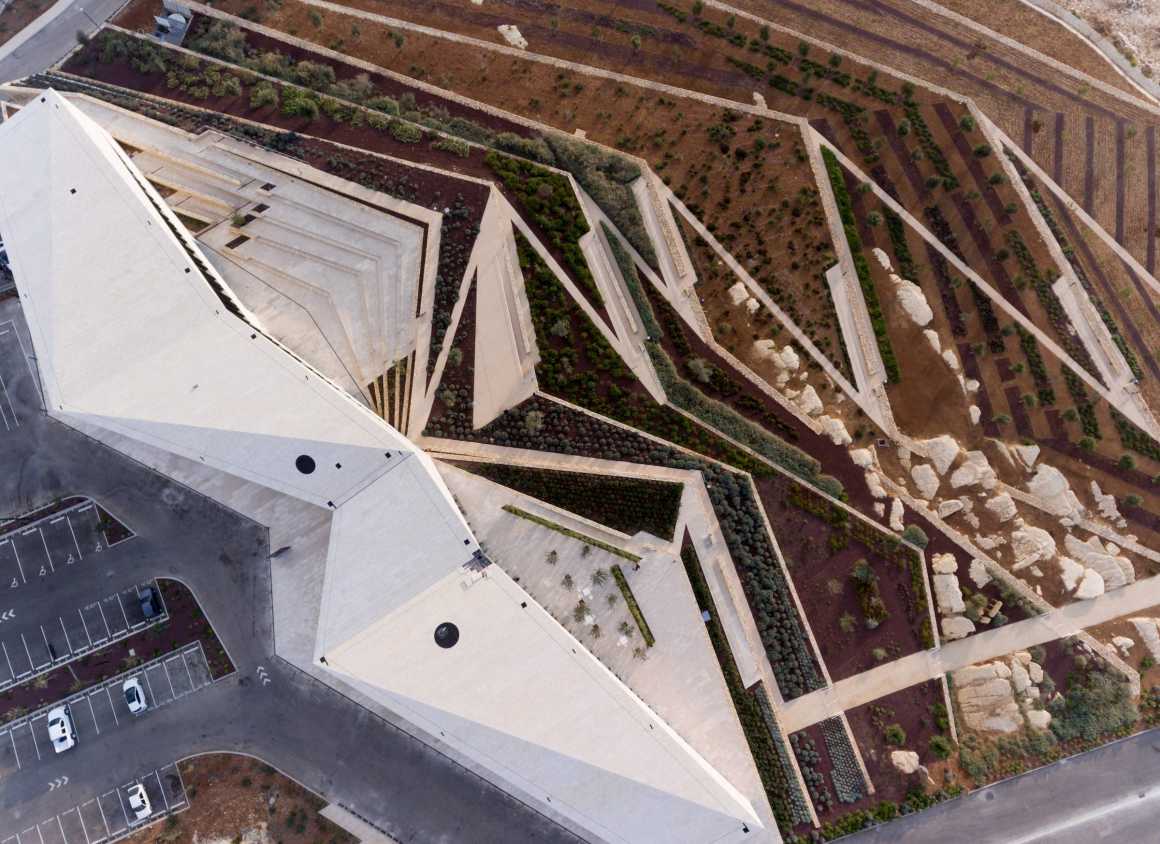
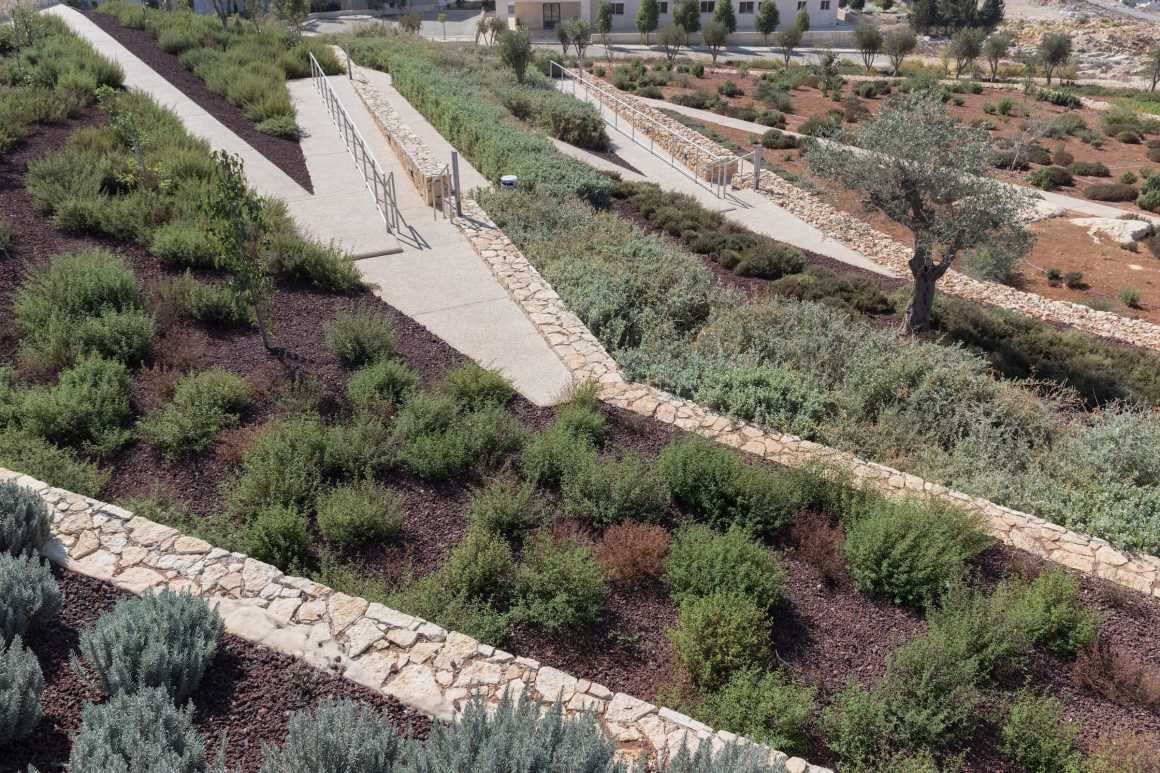
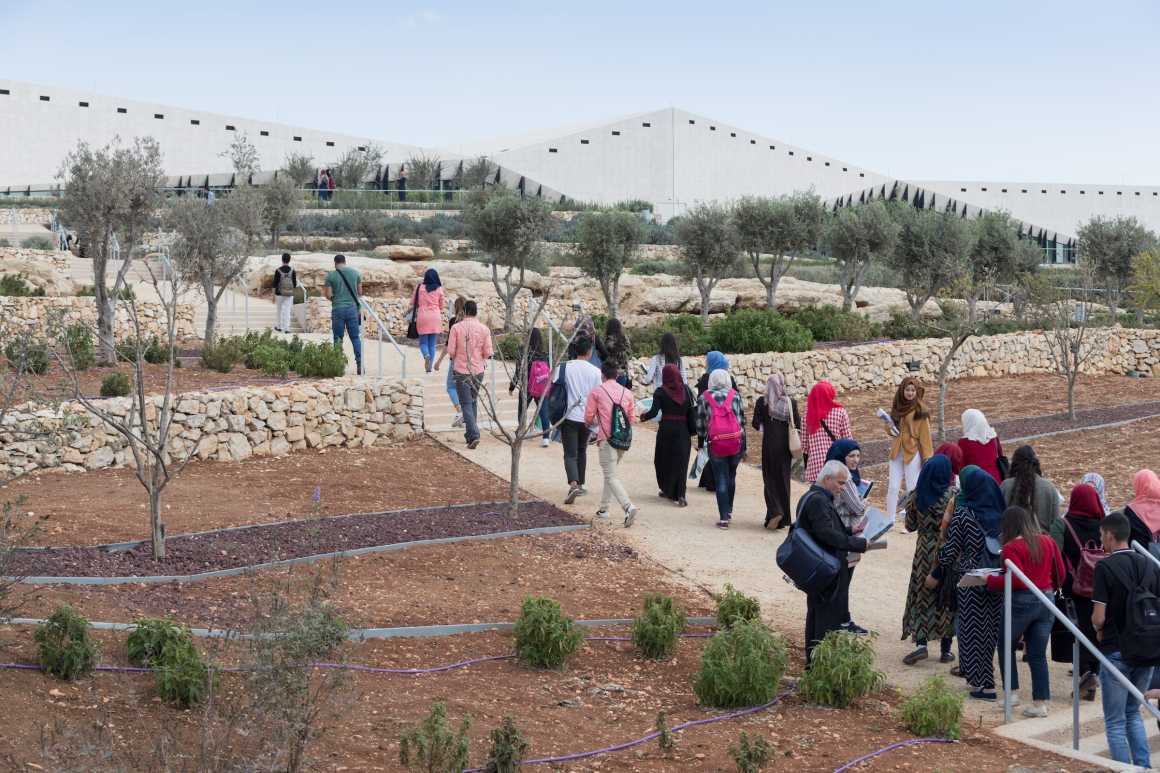

梯田的梯级讲述了这里有关的各种故事:通过贸易路线引进柑橘、本地的芳香草本植物,丰富多样的景观以及东西方的联系。梯田主题包括:文化景观和与文化历史相关的主题,农业遗产、植物与贸易路线和商业的关系。自然景观和主题,荒野和本地植物、灌木林地、草地相结合。
The cascade of terraces tells a diversity of stories; citrus brought in through trade routes, native aromatic herbs, a rich and varied landscape with connections east and west. Terrace themes include: Cultural Landscapes and themes relating to culture and history, Agricultural Heritage, Relationship of plants to trade routes and commerce. Natural Landscapes and themes relating to wilderness and native plants, scrub lands, grass lands.


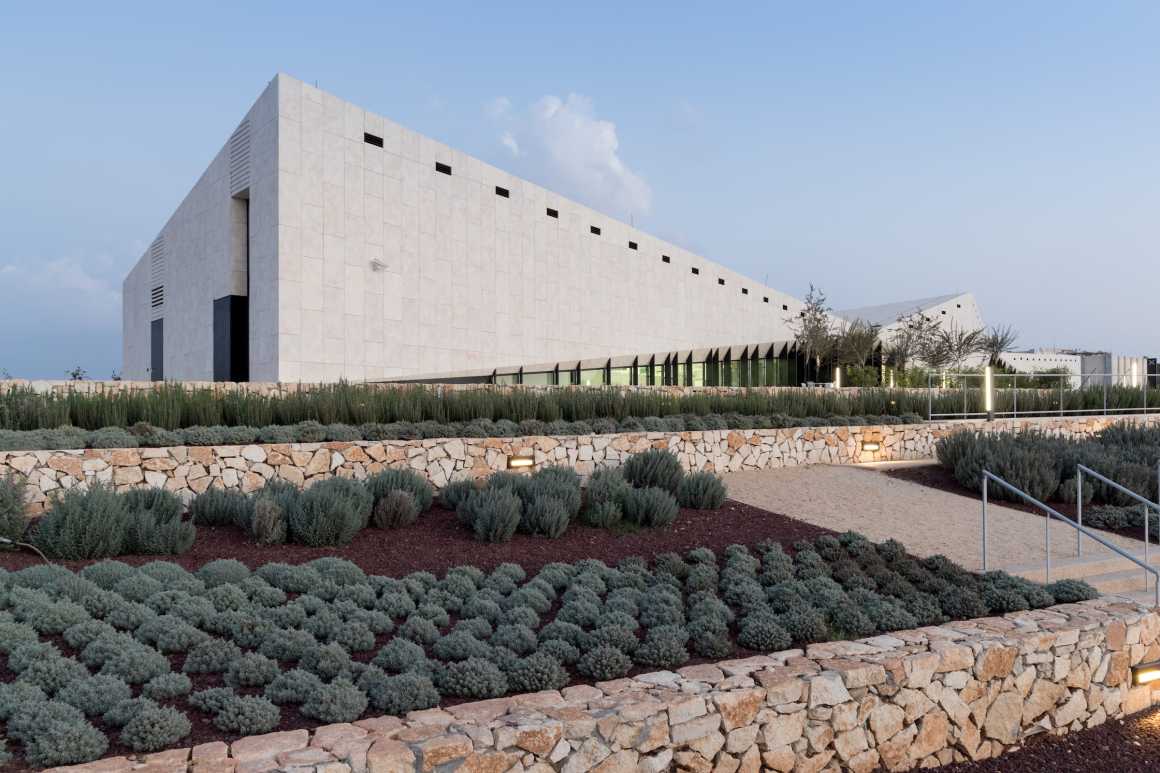

建筑从景观中浮现出来,为山顶创造了一个明显的轮廓,既融入了景观,又创造了一种独特的形式。建筑大部分是单层的,它沿着山顶从南向北延伸,向西俯瞰着花园。建筑一层包括入口接待处、博物馆管理处、画廊、放映室和咖啡厅,它的北端直接通向花园,而在南端则可以俯瞰下方的石制圆形露天剧场。底层有一个公共教育和研究中心,有教室、工作室和行政区,这个教育中心向西边的圆形露天剧场开放。除了教育和研究中心,主要的艺术收藏空间、摄影档案和艺术处理都位于底层。这些空间不对公众开放,只对大楼东侧的安全货场开放。该建筑将是巴勒斯坦第一座获得LEED认证的建筑。
The building itself emerges from the landscape to create a strong profile for the hilltop both integrated into the landscape yet creating an assertive form that has a distinctive identity. Largely single-storey; it stretches out along the hilltop from the south to north; overlooking the gardens to the west. The ground floor, comprising entrance reception, museum administration, galleries, screening room and cafe opens out directly to the gardens at its northern end, while overlooking a stone amphiteatre below it at the southern end. In the lower ground floor there is a public Education and Research Centre with classrooms, workshops and administrative spaces. The education centre opens out to a cut stone amphiteatre to the west. In addition to the Education and Research Centre, the main art collections spaces, photographic archives, and art handling are all located in the lower ground floor. These spaces are not accessible to the public; they open out to a secure delivery yard at the eastern side of the building. The building will be the first LEED Certified building in Palestine.

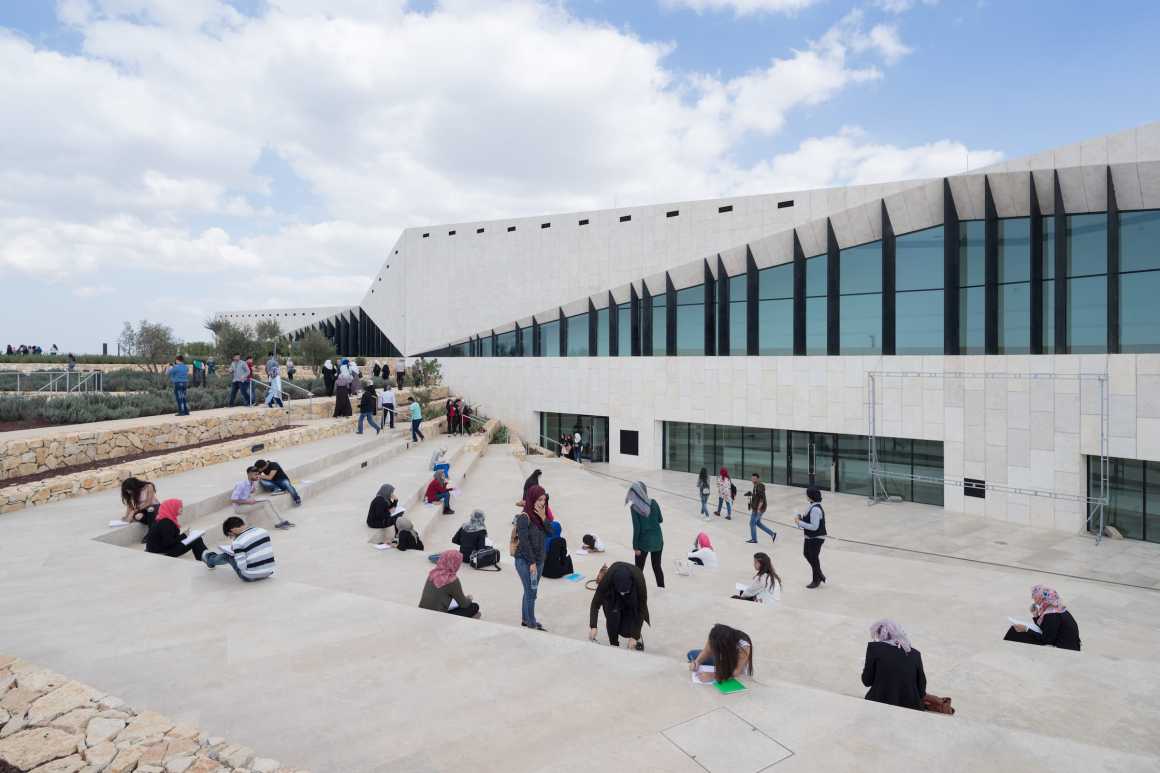

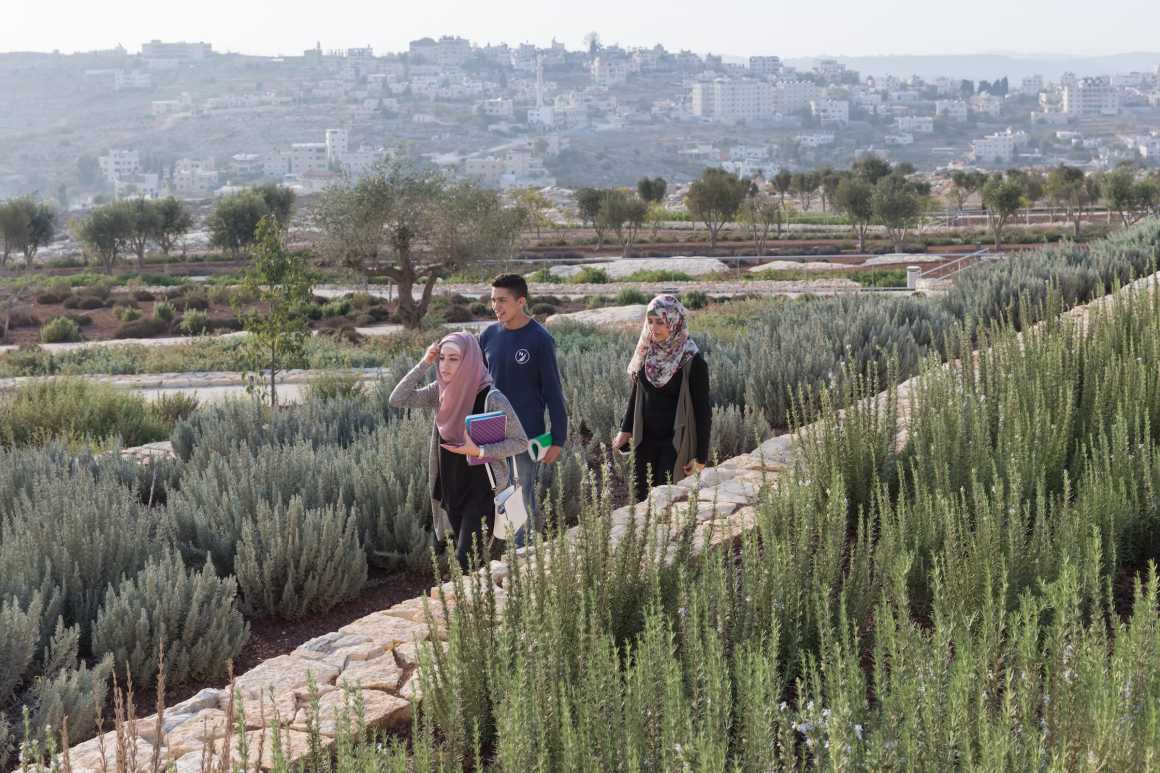
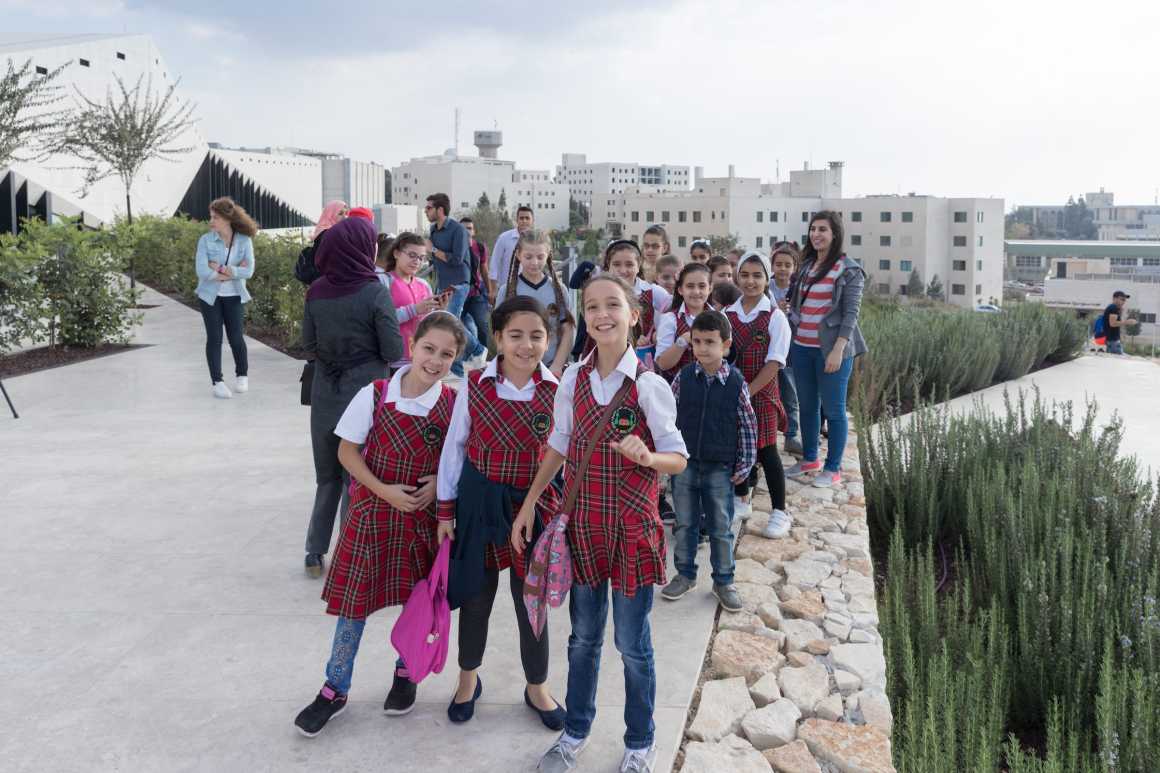
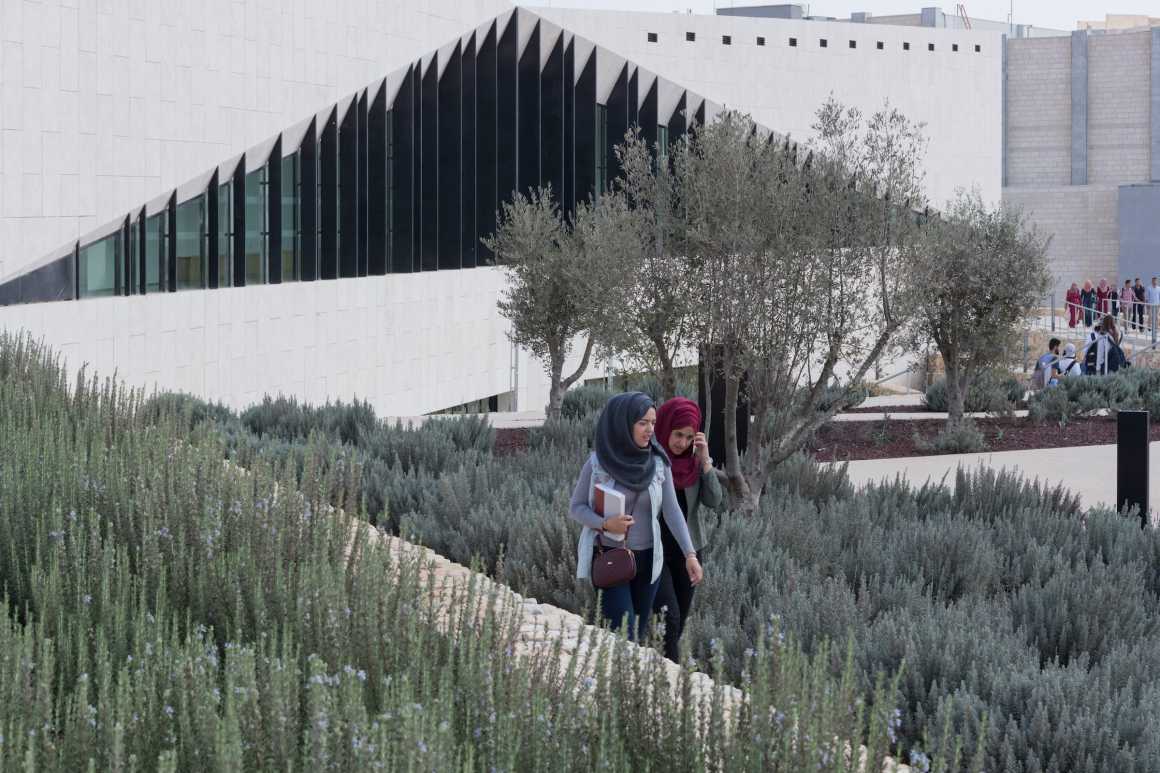


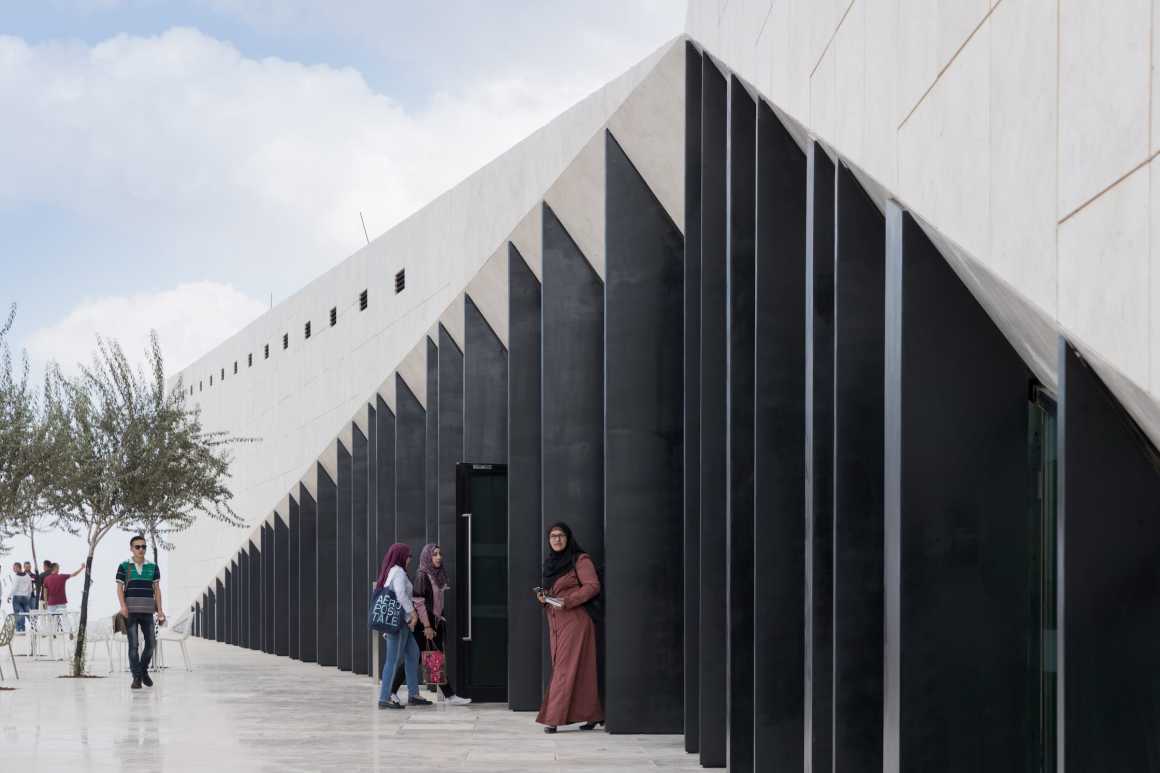
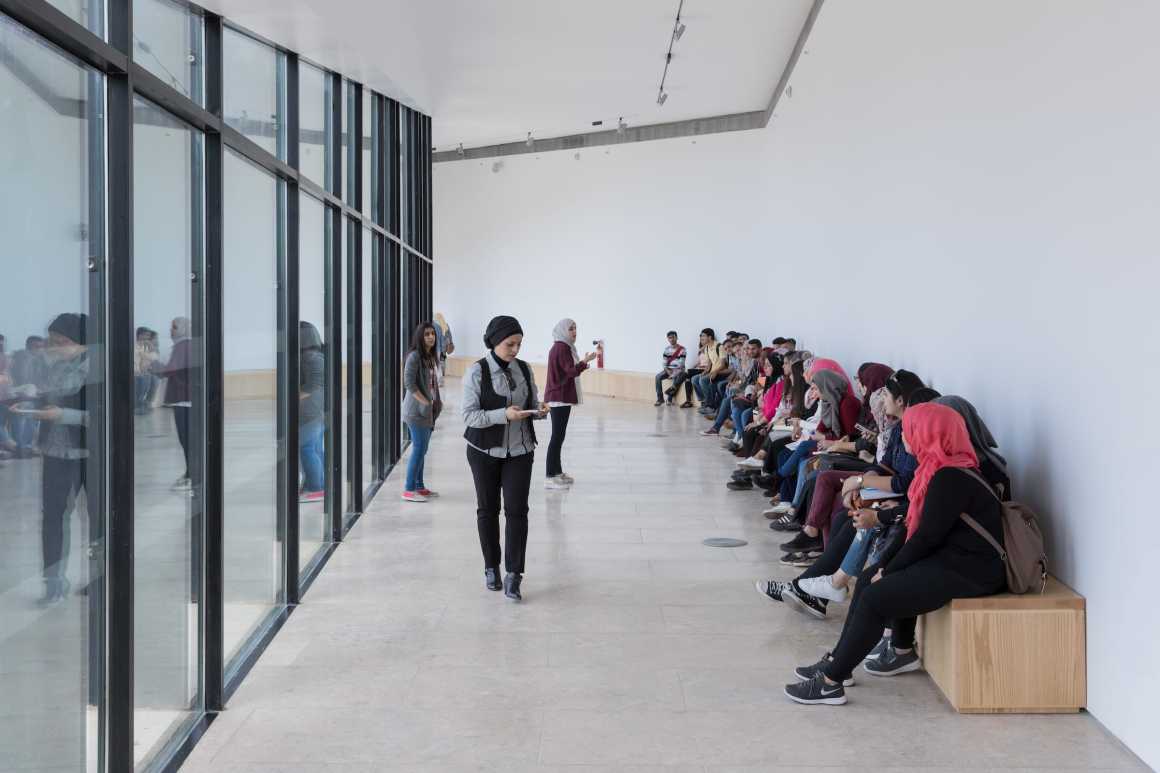

▼基地平面 Site Plan

▼平面图 Master Plan
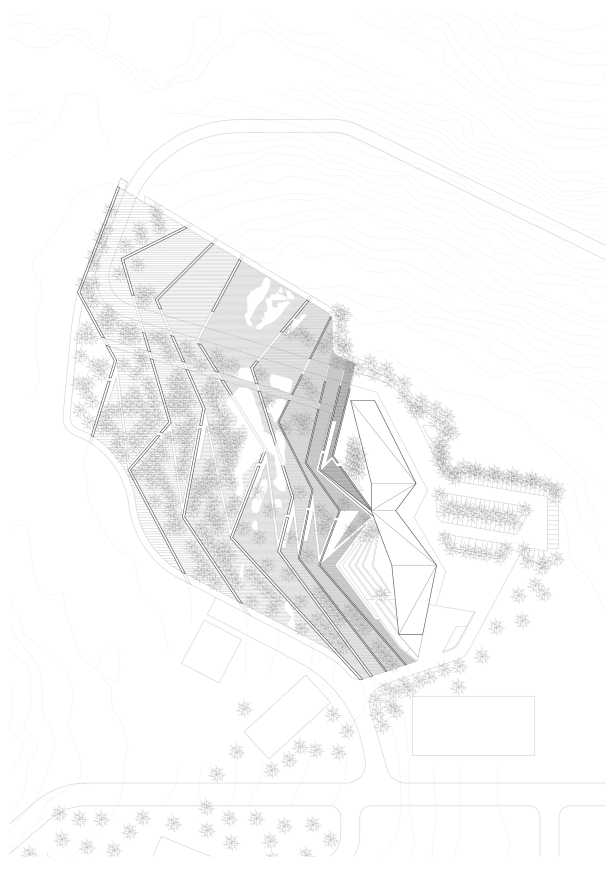
▼首层平面图 Ground Floor Plan
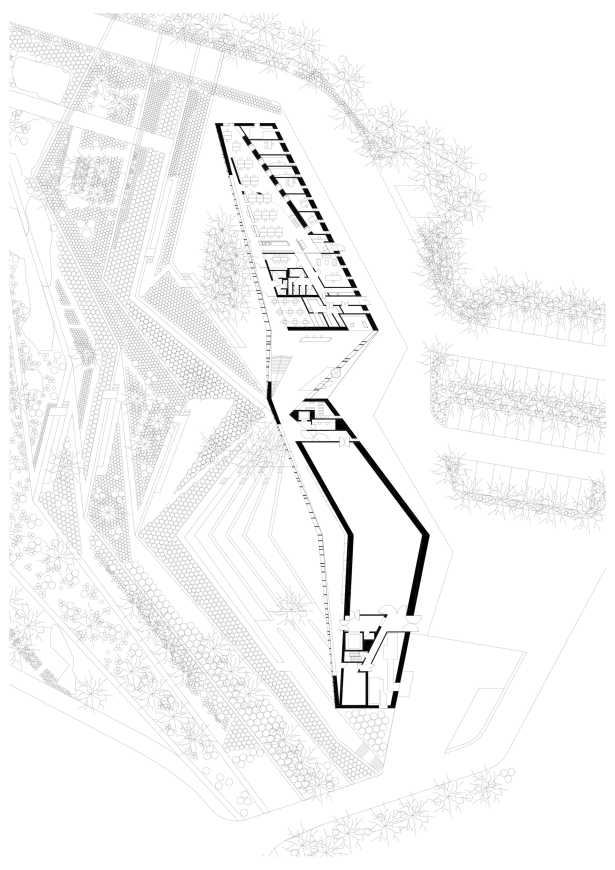
▼底层平面图 Lower Ground Floor Plan
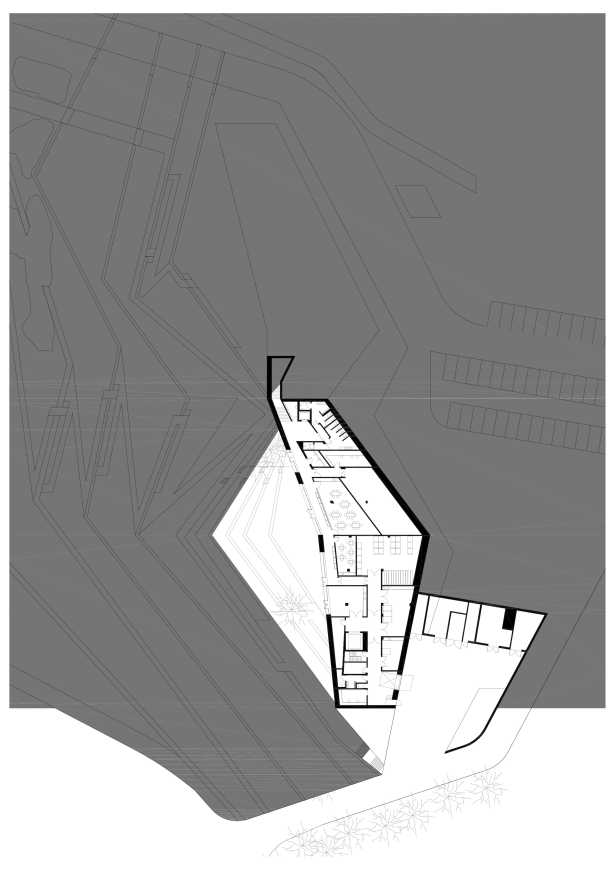
▼基地剖面图 Cross Section

▼建筑立面图 & 剖面图 Elevation & Section



地点:巴勒斯坦西岸比泽特
面积:3500平方米(一期)/ 场地:39000平方米
状态:完成
设计阶段列表(RIBA): A-L
建设预算:2千万美元
客户:Taawon-Welfare Association/ Palestinian Museum Dr Mahmoud Hawari | mhawari@palmuseum.org
设计团队:
概念/方案设计
建筑:Heneghan Peng Architects
景观设计:Lara Zureikat
项目经理:Projacs International
CS/ MEP/ Fire: ARUP
QS: Davis Langdon/ AECOM
概念外观:T / E / S / S
概念照明:Bartenbach Lichtlabor
投标/施工阶段:
建筑:Heneghan Peng Architects
景观设计:Lara Zureikat
项目经理:Projacs International
CS/ MEP/ Fire/ QS: Arabtech Jardaneh
Location: Birzeit, West Bank, Palestine
Size: 3 500 m2 (Phase I) / Site: 39 000 m2
Status: Complete
List of Design Stages (RIBA): A-L
Construction Budget: USD 20 000 000
Client: Taawon-Welfare Association/ Palestinian Museum Dr Mahmoud Hawari I mhawari@palmuseum.org
Design Team:
Concept/ Scheme Design
Architecture: Heneghan Peng Architects
Landscape Architect: Lara Zureikat
Project Managers: Projacs International
CS/ MEP/ Fire: ARUP
QS: Davis Langdon/ AECOM
Concept Façade: T/E/S/S
Concept Lighting: Bartenbach Lichtlabor
Tender/ Construction Stage:
Architecture: Heneghan Peng Architects
Landscape Architect: Lara Zureikat
Project Managers: Projacs International
CS/ MEP/ Fire/ QS: Arabtech Jardaneh
更多 Read more about: Heneghan Peng Architects


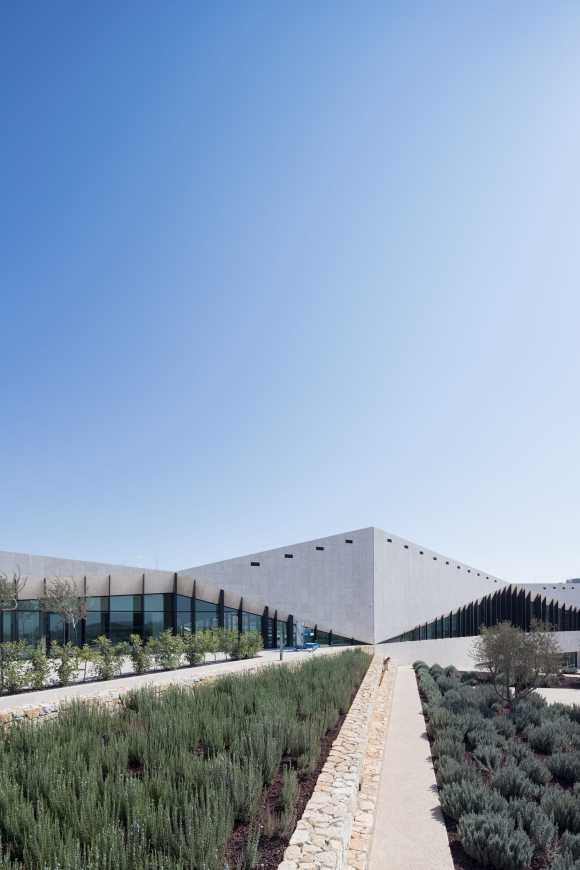





0 Comments